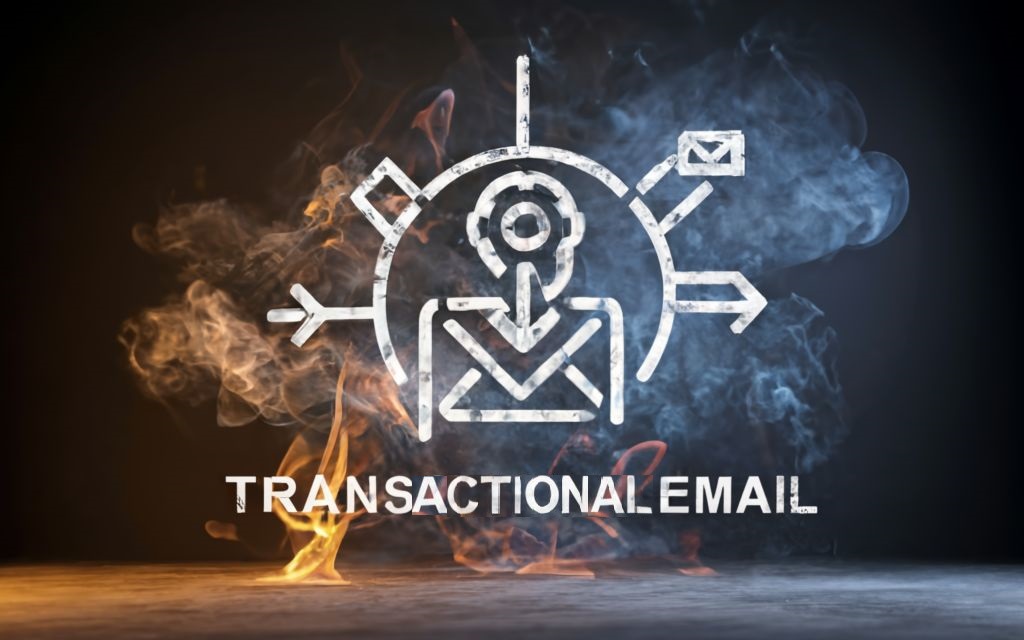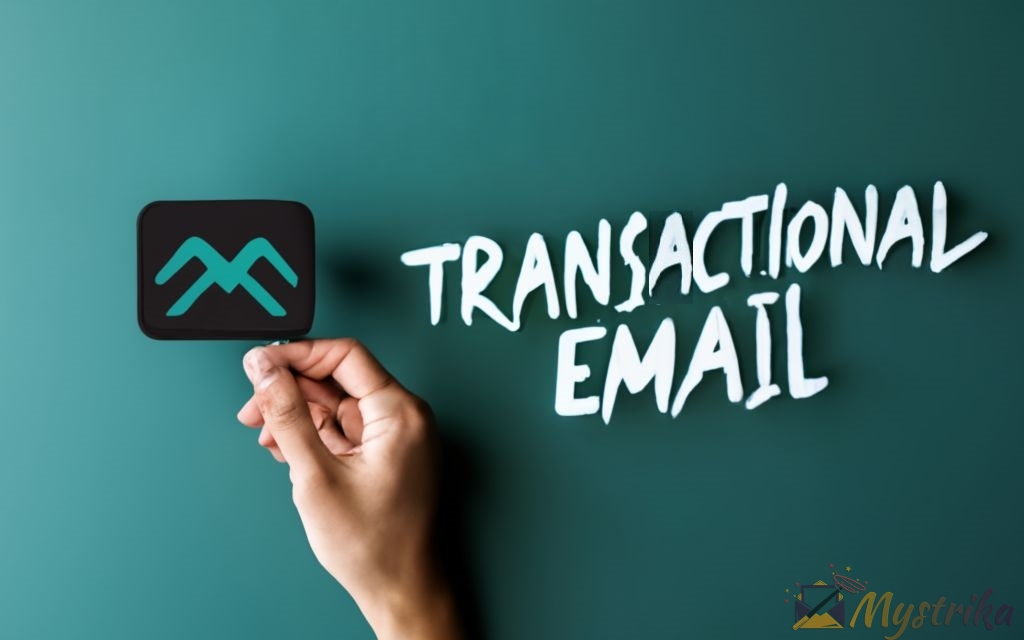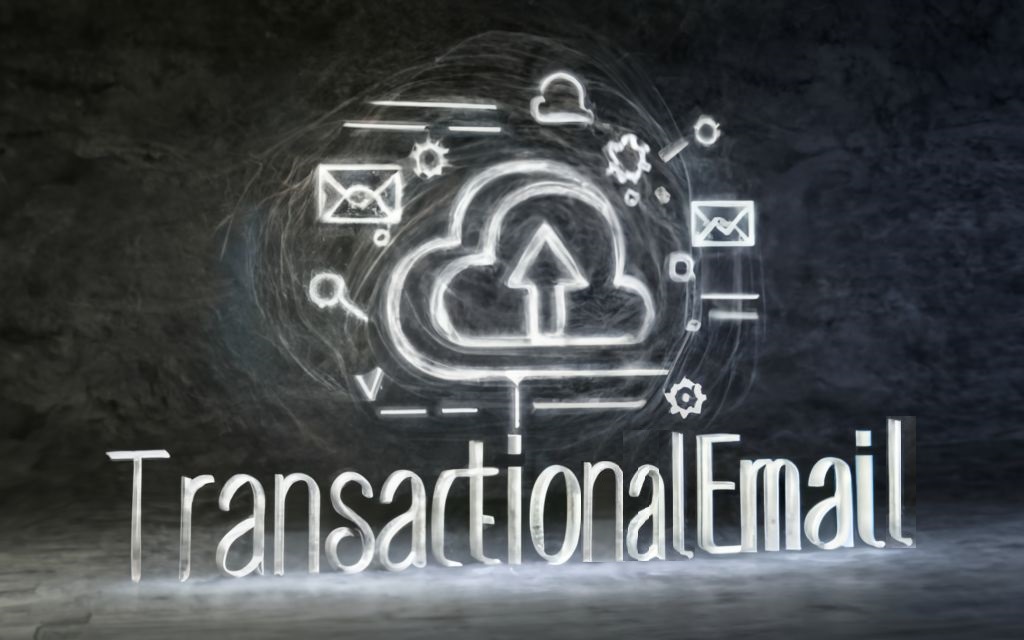Transactional emails provide huge opportunities to engage customers – but only if sent through the right provider. This definitive guide explores the top transactional email services to help you make the perfect pick.
Understanding Transactional Emails and Key Features
Transactional emails are automated messages sent in response to a specific user action or trigger event. Unlike promotional emails, transactional emails provide utility and service for the receiver. Common types of transactional emails include:
- Confirmation emails – Sent immediately after a user signs up, makes a purchase, submits a form, or completes any key action on your site. These confirm their action was successful.
- Receipts and invoices – Provide details of purchases, subscriptions, donations etc. They contain order summaries, payment confirmations, download links, shipping details, or other transaction information.
- Notification emails – Notify users when something important happens related to their account. For example, password reset emails, data download ready notifications, account deletion confirmations.
- Alerts and updates – Send timely information like order shipping and delivery updates, appointment reminders, subscription renewals.
The goal of transactional emails is to provide value through useful, relevant information. Well-optimized transactional emails have tremendous potential to engage customers.
Key Features to Look for in Transactional Email Services
When researching options, here are some key features to keep in mind:
Deliverability
Deliverability refers to how consistently your emails reach the inbox rather than getting flagged as spam. A few key factors impact deliverability:
- Sender reputation – This depends on factors like email authentication, complaint rates, spam trap hits. Choose a provider with established positive reputation.
- Infrastructure – Providers with robust infrastructure tend to have better deliverability across different ISPs and geographies.
- Deliverability tools – Features like dedicated IPs, warmup sending, and analytics help optimize future delivery.
According to data from Statista, the average open rate for transactional email is around 50-60%. But rates can go up to 90% with good deliverability.
Analytics
Transactional email analytics provide data to optimize future messages. Essential metrics to track include:
- Open rate – Percentage of emails opened
- Click rate – Ratio of unique clicks to emails sent
- Bounce rate – Percentage of emails bounced back due to invalid addresses
- Spam complaints – Frequency of emails marked as spam
- Unsubscribes – Number of recipients opting out of future emails
Segmenting users based on their engagement helps personalize outreach. Advanced providers offer deeper analytics using custom metrics.
Ease of Use
Consider how easily non-technical users can create, send and analyze transactional emails:
- Intuitive editor for building emails
- Pre-designed templates to customize
- Contact management and segmentation tools
- Digestible reports and dashboards
Complex setup and coding requirements pose adoption challenges. Seek a solution with automatic validation, authentication configuration and quick integration.
Integrations
Leading services integrate easily with popular platforms like:
- CRM – Salesforce, HubSpot, Zoho
- eCommerce – Shopify, WooCommerce, Magento
- Marketing automation – ActiveCampaign, Keap
- Cloud storage – Google Drive, Dropbox
- Web and Mobile – WordPress, React Native, iOS, Android
This allows capturing events across tools to trigger emails, and tracking engagement data.
The Bottom Line
Well-timed and relevant transactional emails create delight and value for customers. To extract their full potential, use a specialized provider purpose-built for transactional use cases. Prioritize deliverability, analytics, ease of use and integrations during vendor evaluation.
With the right solution, you can increase customer engagement, satisfaction and loyalty through your automated email messaging.

Top Transactional Email Services Compared
Choosing a transactional email service is an important decision that impacts deliverability, analytics, ease of use, and ultimately customer engagement. Here we compare six leading providers to help you select the right solution for your needs.
SendGrid
SendGrid is a popular email API platform used by major companies like Airbnb, Spotify, and Uber. It offers plans specifically for transactional and marketing use cases, along with add-ons for advanced functionality.
Pros
- Deliverability: SendGrid has strong sender reputation and dedicated IPs to maximize inbox placement. It uses advanced techniques like link branding, feedback loops, authenticating domains and more.
- Analytics: Detailed email event tracking and metrics help optimize campaigns. View unique metrics like expert insights, mailbox provider analysis, spam report categorization etc.
- Free plan: 12,000 free emails per month make it easy to get started. Paid plans start at $15.95/month.
Cons
- Complexity: SendGrid packs in many advanced features, but isn’t the most beginner friendly. Expect a learning curve, especially for non-developers.
- Support concerns: Some users report frustrating experiences with account issues or deliverability troubleshooting not getting resolved promptly.
Postmark
Postmark focuses exclusively on transactional email delivery. It prides itself on blazing fast delivery speeds.
Pros
- Fast delivery: Postmark’s entire infrastructure optimizes for speed. It delivers most transactional emails under 10 seconds.
- Easy setup: Configuration takes minutes, and Postmark’s documentation is very developer-friendly. It supports webhooks, APIs, and various integrations.
- Reliable support: Users report exceptional customer service experiences with knowledgeable reps resolving issues promptly.
Cons
- Limited features: By design, Postmark avoids fancy extras and sticks to fast transactional email sending. It lacks advanced automation or templates.
- Pricing: Starting at $12/month for 25,000 emails, Postmark is significantly pricier than most competitors. Large volume plans offer more competitive rates.
Amazon SES
Amazon Simple Email Service (SES) is a scalable cloud-based email platform from AWS. It’s popularity stems from extremely low pricing, starting at just $0.10 per 1000 emails sent.
Pros
- Low cost: Amazon SES is one of the most affordable transactional email services in terms of cost per email sent.
- Global infrastructure: AWS’s worldwide presence means fast delivery across geographies.
Cons
- Manual work required: Lack of deliverability data or insights means extra effort for troubleshooting issues. You handle bounce and complaint processing.
- Support limitations: No phone or chat support offered.documentation and community forums are the only means of assistance.
SendinBlue
SendinBlue combines transactional email capabilities with marketing automation and CRM features. It aims to provide an all-in-one platform for customer messaging.
Pros
- Easy to use: Intuitive drag and drop editor, 300+ templates, and great documentation make SendinBlue easy for non-developers.
- Free plan: 9,000 emails monthly, unlimited contacts, and full features make this very generous.
- Marketing capabilities: Automate multi-channel campaigns beyond just transactional email.
Cons
- Deliverability concerns: Some users report inconsistent inbox placement, slow delivery or missing emails.
Mailgun
Mailgun by Sinch focuses exclusively on developer-friendly APIs for email sending. It powers over 150,000 websites.
Pros
- Reliable infrastructure: Mailgun has an established global infrastructure and 99.99% uptime SLA.
- Transactional focus: Unlike some competitors, Mailgun doesn’t mix marketing and transactional email streams.
Cons
- Support complaints: Despite “24/7/365 support” advertised, Zendesk rating is just 2.5/5 and many report long waits.
- Deliverability issues: Though not widespread, some users report emails landing in spam or being delayed.
SparkPost
Enterprise-scale SparkPost brags delivering over 37% of the world’s B2C email. It focuses on advanced capabilities for huge volumes.
Pros
- In-depth analytics: Very detailed email event tracking, metrics segmentation, and visualization options.
- Enterprise-ready: Advanced compliance, security, and scalability features for large businesses.
Cons
- Not for small volumes: Minimum 25,000 emails monthly makes SparkPost overkill for modest use cases.
- Deliverability problems: Despite safeguards, some users report inconsistent inbox placement, impacting sender reputation.
The Bottom Line
The “best” transactional email service depends on your specific needs. High volume senders prioritizing advanced analytics may prefer SparkPost, while highly regulated businesses need SendGrid’s compliance capabilities. Developers valuing speed above all should consider Postmark.
Most small to medium businesses can benefit from a moderately priced, balanced solution like SendinBlue. For ultimate affordability, Amazon SES is hard to beat. Conduct trials, read user reviews, and factor in your priorities before selecting a platform.
The right provider helps your business build strong customer relationships through useful, engaging transactional messages. But the wrong solution leads to deliverability headaches, data gaps, and frustration. Hopefully this overview provides a solid starting point for your vendor evaluation process.

Key Factors to Consider When Choosing a Provider
With so many options to evaluate, narrowing down the ideal transactional email service for your needs can feel daunting. Here are five key considerations to help guide your decision making process:
Your Technical Expertise
Transactional email services come with varying degrees of complexity. Assess whether you need a code-free drag and drop editor, pre-made templates and intuitive workflows – or are you able to work with APIs and code integrations?
Beginner
Opt for a solution with minimal coding requirements and easy self-serve setup. SendinBlue is a good example—it provides an intuitive editor, 300+ templates and clear documentation for non-developers.
Intermediate
If you have some technical know-how, but not extensive coding skills, platforms like SendGrid](https://sendgrid.com/) and [Postmark fit the bill. Their integrations, APIs and documentation cater to those with limited development expertise.
Advanced
For full control over custom integrations, transactional infrastructure, and advanced functionality, a developer-focused platform like Mailgun is preferable. But expect a steeper learning curve.
Choose an email service aligned with your team’s technical proficiency to avoid unnecessary complexity or limitations.
Importance of Deliverability
Consider how critical email deliverability is for your transactional use cases in terms of customer experience and business outcomes.
Higher stakes scenarios like order confirmations, password resets and account notices require maximum reliability. Select a specialized provider like Postmark or SendGrid, known for optimizing deliverability through reputation monitoring, dedicated IPs, and other safeguards.
For moderately important confirmations or updates where deliverability is important but not paramount, SendinBlue, Mailgun and SparkPost offer a good balance of features and inbox placement.
In cost-sensitive use cases like comment notifications, newsletter subscriptions etc, Amazon SES offers affordable bulk sending with decent baseline deliverability.
Evaluate deliverability requirements before prioritizing cost savings on commodity infrastructure—a few lost emails can have outsized impacts.
Email Volume Needed
Transactional email services price plans based on monthly email volume. Consider current and projected near-term usage to pick the right range.
For less than 15,000 emails per month, Postmark](https://postmarkapp.com/pricing) and [SendinBlue have competitive entry-level plans starting around $10-$15.
Up to 100,000 emails monthly, SendGrid](https://sendgrid.com/pricing) and [SparkPost offer strong mid-range plans from $15-$30.
For heavy usage beyond 250,000 monthly emails, Mailgun](https://www.mailgun.com/pricing) and [Amazon SES become very affordable at less than $0.20 per thousand emails.
Some services offer “pay as you go” consumption models in case email volume fluctuates monthly. Understand your needs before overpaying for unused capacity.
Marketing Automation Needs
Certain providers offer multi-channel marketing and automation capabilities beyond just transactional email.
Options like SendinBlue](https://www.sendinblue.com/) and [SendGrid allow creating triggered campaigns across email, SMS, chat and ads.
Others like Postmark](https://postmarkapp.com/) and [SparkPost focus exclusively on email sending.
If you need an integrated platform to automate customer journeys, choose the former. But if email is your main communication channel, the simpler services suffice.
Budget
Transactional email pricing varies widely, from less than a cent per email to a dollar or more. Balance capabilities against costs to maximize value.
For ultra-low budgets, Amazon SES offers unbeatable rates but less support and flexibility.
The cheapest full-featured options are SendinBlue](https://www.sendinblue.com/pricing), SendGrid and [SparkPost at less than $0.20 per thousand emails.
At the premium tier , Postmark](https://postmarkapp.com/pricing) and [Mailgun offer specialized infrastructure and support for $0.75 to $1.50 per thousand.
Avoid choosing services purely on price—deliverability and reliability impacts are hard to quantify. But do leverage free trials and introductory offers to maximize value.
The Bottom Line
The best transactional email provider aligns with your use case, priorities and constraints. Optimizing for deliverability, ease of use, automation capabilities or costs each leads to different solutions.
Define your must-haves and nice-to-haves before you begin comparing options. Weigh the pros and cons of leading vendors based on your specific needs. With the exponential growth of transactional email usage, choosing the right platform is a key business decision that impacts customer engagement.
Hopefully these factors give you a framework for making the right choice. Reach out if you need any guidance finding a transactional email service tailored for your goals and constraints. Our team of experts is here to help.
Tips for Getting the Most from Your Transactional Email Service
The right transactional email provider lays the foundation for maximizing customer engagement. But you need to leverage the platform correctly to extract full value.
Here are five tips to optimize your transactional email program:
Personalize Messages
Generic batch-and-blast emails have below average open and click rates. Personalized one-to-one messages perform better.
Targeting fields like name, company and location in the subject line and body increases relevance. Welcome new customers by name, mention recent purchases, and use their city in the sign-off.
Transactional emails can also leverage data like:
- Purchase history
- Abandoned cart items
- Favorite products
- User preferences
- Behavior like email opens/clicks
Tools like segmentation, A/B testing and automation enable personalization. But balance targeting with privacy – don’t get creepy.
According to Experian, personalization can increase transactional email revenue by an average of 19%.
Track Performance
Monitoring metrics helps continuously optimize your programs. Look at:
- Open and click rates – Are your subject lines and content engaging readers?
- Bounce rates – How much of your list is invalid? Trim stale contacts.
- Spam complaints – Are messages being marked as spam? Isolate reasons.
- Unsubscribes – Review messaging, frequency and targeting for dissatisfied users.
- Engagement segmentation – See trends by demographic, lifecycle stage, or attributes.
Tools like A/B testing and analytics dashboards uncover optimization opportunities. Set benchmarks, monitor regularly, and course correct.
According to Invespcro, transactional emails have 2-3 times higher open rates than promotional email. Track this metric.
Test from Different Accounts
Don’t just send yourself test emails from one account. Verify how messages look and deliver across different mail providers like Gmail, Yahoo and Outlook.
Test these scenarios:
- New users/accounts vs established ones
- Free accounts vs paid plans
- Low activity vs highly engaged users
- Different geographies and languages
- Common ISPs and inboxes
- Mobile vs desktop environments
Use tools like Mail Tester to confirm inbox delivery and spam filtering for each test case.
Validate Contact Lists
Bad data causes bounces, complaints and disengaged recipients. Validating and cleaning your lists improves results.
Here’s how to maintain list hygiene:
- Confirm opt-in consent – Respect unsubscribes, privacy preferences and anti-spam regulations.
- Verify addresses – Check for misspellings, invalid domains and disposable/role accounts.
- Remove stale contacts – Delete non-responsive, bounced or redundant entries.
- Suppress spam traps – Filter out email addresses used solely to identify spammers.
- Monitor engagement – Review open and click rates to isolate inactive contacts.
Tools like email verification APIs and spam filter testing help clean your lists. Don’t jeopardize sender reputation with outdated, unqualified data.
Adjust Campaigns Based on Insights
Review the data, identify what’s working well and what’s not, and optimize accordingly.
For example, if a confirmation email has low open rates, try:
- Tweaking the subject line
- Sending at a different time
- Shortening content
- Adding more personalization
- Changing visual layout
Regularly refine your transactional approach based on results. The data exposes opportunities to boost customer satisfaction.
Get More Value from Your Provider
Leveraging the full capabilities of your transactional email service is key to maximizing program success. Avoid underutilizing the platform.
With the right tools and optimization practices, you can take your transactional messaging to the next level. Ultimately, this leads to better customer experiences and stronger business outcomes.
What tips do you have for getting the most out of transactional email services? Share your thoughts and advice in the comments below!

Integrating Transactional Emails into Your Tech Stack
To maximize the impact of your transactional email program, you need to seamlessly embed it into your existing technology architecture. Here’s how leading platforms integrate across categories:
CRM Platforms
CRM systems like Salesforce, HubSpot and Zoho are treasure troves of user data to personalize transactional messages and track engagement.
Popular integrations:
- SendGrid + Salesforce – Sync contacts, embed templates, track email metrics back to CRM records
- Postmark + HubSpot – Trigger transactional emails from HubSpot workflows, sync bounce/open data
- SendinBlue + Zoho – Add contacts, update records based on email activity, view analytics
Key benefits:
- Single customer view across channels
- Personalized, targeted emails based on CRM data
- Closed-loop attribution with engagement tracked back to CRM
eCommerce Platforms
Triggering order confirmations, shipping notices and other buyer emails from your eCommerce platform is table stakes.
Popular integrations:
- SendGrid + Shopify – Connect stores, embed templates, track sales metrics
- Postmark + WooCommerce – Add contacts, trigger store emails, handle bounces
- SparkPost + Magento – Sync customers, track activity, handle unsubscribes
Key benefits:
- Pre-built integrations avoid engineering effort
- Out-of-the-box templates for common eCommerce emails
- Order and customer data passes directly to emails
Web and Mobile Apps
Embed transactional email capabilities directly into your custom web or mobile apps via developer-friendly APIs.
Popular integrations:
- SendGrid + React – Send through SendGrid’s Node.
The Future of Transactional Emails
Transactional emails have rapidly evolved from plain text notifications to strategic customer engagement tools. This utility-based messaging is only growing in sophistication and impact.
Here are three ways experts predict transactional emails will continue advancing:
Increasing Open and Click Rates
More intelligent targeting, better design and expanded use cases will drive up engagement.
Smarter segmentation and personalization ensures messages resonate at an individual level. Subject lines dynamically reference user data to pique interest.
Improved templates, layouts and creative keep customers opening, reading and responding. The stark HTML emails of yesterday are being replaced with attractive, interactive messages.
Businesses will also find new transactional scenarios like anniversary, loyalty and retention emails beyond today’s confirmation focus.
The DMA found transactional emails generate 2-3 times more opens than traditional marketing messages. Expect this gap to widen further.
More Personalized Content
Generic batch-and-blast emails will lose out to contextual one-to-one messaging.
Transactional emails will evolve from form letters to tailored conversations. Machine learning will predict recipient needs and preferences to hyper-personalize content.
Interactivity through surveys, product recommendations and special offers creates two-way dialogues. User behaviors and intent inform dynamic messages tailored to each moment.
The end result is relevant communication that provides value, not unwanted intrusion. Personalization makes transactional emails feel helpful, not salesy.
Epsilon found 80% of surveyed consumers are more likely to purchase based on personalized messaging.
Omnichannel Coordination
Emails will increasingly synchronize across platforms for integrated messaging.
User behaviors on websites, mobile apps and internet-connected devices will trigger corresponding transactional emails. The days of isolated touchpoints are ending.
For example, smart speakers may read out customized order updates. Social media ads will reference abandoned shopping carts. Mobile wallet passes can confirm in-store purchases.
This omnichannel approach reinforces messaging consistency. Automation connects experiences across channels to unify the customer journey.
Salesforce reports 71% of consumers expect consistent interactions across departments and channels. Transactional emails will help bridge the omnichannel gap.
The Bottom Line
We are still in the early phases of leveraging transactional messaging to nurture customer relationships and accelerate business growth.
Advances in personalization, automation and coordination will enable more targeted, valuable experiences through email. Marketers who capitalize on this potential will reap the rewards.
Which innovations are you most excited to see shape the future of transactional emails? Let us know your thoughts in the comments!

Key Takeaways
Choosing the right transactional email service is critical for delivering value to customers and getting engagement in return. Here are the key things to remember:
- Understand the types of transactional emails and essential features like deliverability, analytics and ease of use.
- Compare leading providers like SendGrid, Postmark, Amazon SES, SendinBlue, Mailgun and SparkPost based on your needs.
- Factor in considerations like technical expertise, email volume, marketing features and budget when evaluating vendors.
- Maximize your platform with personalization, performance tracking, testing, list validation and optimization based on insights.
- Expect major advances in sophistication through increased personalization, omnichannel coordination and innovation.
- Find a solution tailored to your use cases, priorities and constraints for impactful 1:1 messaging.
The right transactional email partner combined with savvy execution provides huge opportunities to boost customer engagement. Hopefully this guide gave you insights to help select and implement the ideal platform for your needs. Let us know if you have any other questions as you evaluate providers!
Frequently Asked Questions
Q: What are some examples of transactional emails?
Common transactional emails include order confirmations, shipping notifications, password reset emails, account creation confirmations, payment receipts, data download links, subscription renewals, and low stock inventory alerts.
Q: How are transactional emails different from marketing emails?
Transactional emails provide utility and are triggered by specific user actions. Marketing emails proactively promote products, offers and content. Transactional emails tend to have much higher open and engagement rates.
Q: What factors impact deliverability of transactional emails?
Key factors are sender reputation, infrastructure quality, authentication mechanisms, spam filter avoidance, inbox placement monitoring, dedicated IPs, and engagement segmentation. Advanced providers optimize all these.
Q: How many transactional emails can I send per month on free plans?
Entry-level free plans allow anywhere from 100 to 15,000 emails monthly. Paid plans start around $10-$15/month for 10,000-25,000 emails. Volume discounts are available for high usage.
Q: What analytics and data should I track for transactional emails?
Monitor open rate, click rate, bounce rate, spam complaints, unsubscribe rate, domain-specific metrics, geolocation metrics, and engagement segmentation across user attributes and behaviors.
Q: How can I maximize value from my transactional email provider?
Tips include personalizing content, constantly optimizing based on performance data, testing across user segments, maintaining clean contact lists, leveraging automation triggers, and using all available features.
Q: Which providers are best for email marketing in addition to transactional?
SendinBlue and SendGrid both offer solid capabilities for marketing automation, newsletters, onboarding flows, and cross-channel campaigns in addition to transactional messaging.

